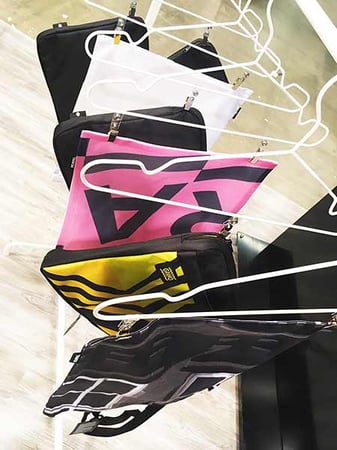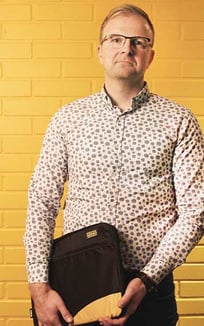Blog - Grano — 4.12.2017 — min read time
Large format printing and the circular economy = a winning combination

The environmental friendliness of large format printing has been discussed for years, if not decades. During that time the industry has switched to using more ecological materials, while also attempting to improve their characteristics or at least maintain them at the previous level. In addition to this, the industry has developed ecological alternatives to solvent-based inks, while successfully reducing the amounts of ink needed to produce prints. The industry has also begun to pay more attention to recycling, improving the sorting and recycling of production material waste.
Pictured above are some circular economy products made from Grano's own advertising banners.
What or who steers customers' choices?
The values of client companies have begun to increasingly reflect environmental concerns. At the same time social responsibility has become something that needs to be considered not only by companies, but individuals as well. Nowadays clients seeking printing solutions may already have a clear idea of materials that represent a greener approach. Meanwhile, printing houses have started to use recycled materials in their production. Sales representatives are already offering these ecological materials to clients, and there are many kinds of certifications and symbols that attest to their environmental friendliness. These are all great developments of course, but...
Does environmental friendliness end when the signs or banners have been hung?
Not necessarily. When considering solutions, what if we were to also consider the "next life" of the product? Imagine, for example, a client ordering a large number of cloth banners for a trade fair or event. Once the event is over, what is the client to do with all the fabric? Since the beginning of 2016, textile waste has been considered organic waste, which cannot be delivered to a landfill site, so that's out. One solution is to put everything in storage to wait for the next event, which may never come. But what if the used fabrics could be used as raw material for new products?
People love stories!
It's true. People decorate their homes with old items all the time, giving used items a new purpose in the process. So why couldn't an "old" large format product also be reborn? After all, the only thing limiting the re-use of used fabrics, for example, is people's imagination. The key is to realise that waste is not necessarily waste. What could be cooler than making banners that have seen a few festivals into personalised laptop bags, for example, turning them into mementos, corporate gifts or products for sale in the process? ”Do you still remember the Tikkurila Festival of 2016? - Oh yeah, they really pushed ecological thinking to the next level!” Or what better way to remember the legendary PuLaAho line from last winter's Ice Hockey World Junior Championships than shopping bags made from the banners that were on display in the rink? Products like this already have a story behind them, one that they can keep telling year after year!
Can you think of things from a new perspective? Is that something we should do? Something we want to do? Yes it is!

Tatu Rinne
The writer is the production line director of Grano's large format printing


